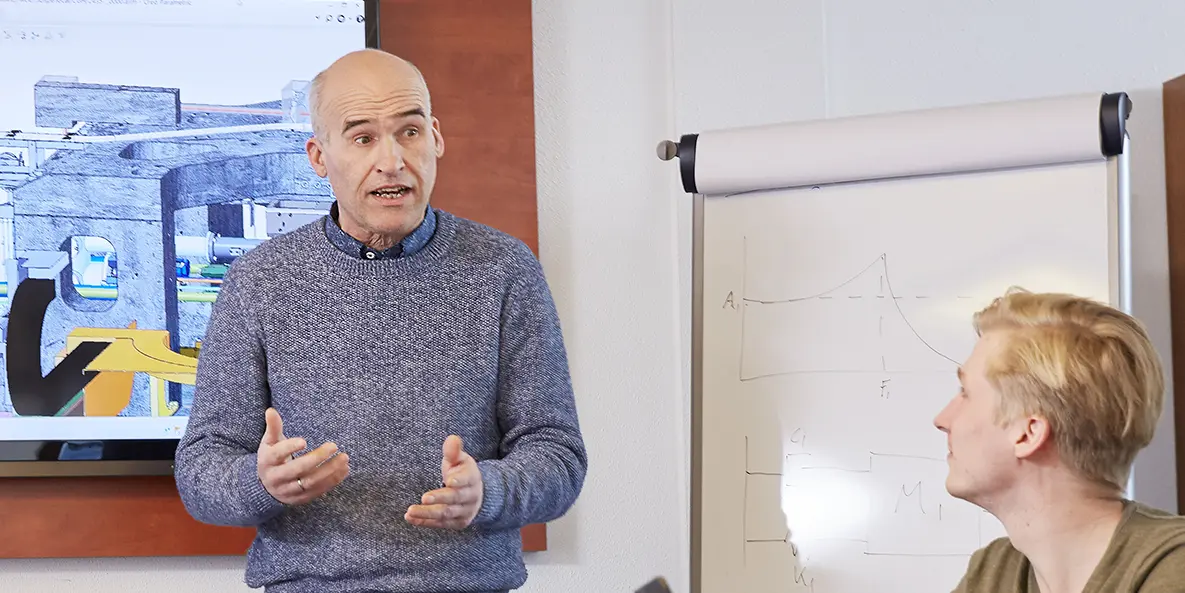-
Can I compare the Trinity to other calibration measuring tools in the market?
-
The Trinity is the only tool that can perform a 3D dynamic measurement in conformity with the ISO standard in just a minute. In contrast, alternative measuring methods such as touch probes are static and therefore are unable to measure dynamic errors, or those methods are 1-dimensional and therefore blind for squareness errors. Moreover, these alternative methods require more time to complete a machine qualification.
-
What is the main benefit of the Rotary Inspector for machine tool users?
-
The main benefit of using the Rotary Inspector is that it allows for quick and accurate checking of a machine's dynamic and geometric deviation, which can then be compared to previous measurements to ensure tolerance compliance. It takes only one minute to map the machine's geometric and dynamic errors. Compensation can then be applied in the kinematic chain.
-
What is the main benefit of the Rotary Analyzer?
-
The Rotary Analyzer provides a more in depth analysis of measuring data compared to the Rotary Inspector. This enables the user to find the root cause of any deviations. Additionally, the software allows you to do static and dynamic measurements and write your own measuring programs.
-
Can the Rotary inspector run automatically?
-
Yes, once the Trinity is set up, it can be incorporated into the protocol. It is toolchain compatible, which means it can be called at any time. If the correct NC-file is run, a measurement report is provided by the software within minutes.
-
Can a machine tool be compensated and improved, and if so, how?
-
Yes, it is possible to compensate a machine after a measurement is taken using the measuring protocol which consists of three steps: qualifying the first rotary axis, then the second rotary axis, and finally the total machine.
When compensating, one axis is compensated at a time, starting with the primary rotary axis, followed by the second rotary axis. After compensation, a new measurement is taken to evaluate the machine's new qualification.
-
Who uses the system?
-
The Rotary Inspector is utilised by workshops where it is employed for quality purposes and by service teams to guarantee the accuracy of the machine during maintenance.
The Rotary Analyzer is used by machine tool builders, universities and research institutes where it is used for research and development activities. Furthermore, workshops rely on this tool to identify the root causes of machines that deviate from tolerance levels.
-
How accurate is the measurement?
-
The sensors used by the Trinity have a resolution of 0.2μm.
-
Can I export the measurement data?
-
Yes, the data of a measurement can be exported as an ASCII-file.
-
How does the system establish a wireless connection?
-
The Trinity uses a local network that is setup by an access point. The laptop and Trinity communicate via this access point. In the newer generation, the Trinitym, Bluetooth is used for the communication protocol.
-
Can I use the correction values for automatic compensation?
-
Yes, you can use the correction values for automatic compensation. However, a communication channel between our Rotary Inspector software and the CNC-machine is necessary for the automatic compensation of the machine.
-
Does the Trinity need to be calibrated?
-
Yes, we recommend performing a yearly calibration of the Trinity to ensure the reliability of previous measurements.
-
Can the Trinity be used on machines other than 5-axis milling machines?
-
Yes, the Trinity can be used on all multi-axes machines such as 3+1 milling machines, lathes and multi-axis robots.
